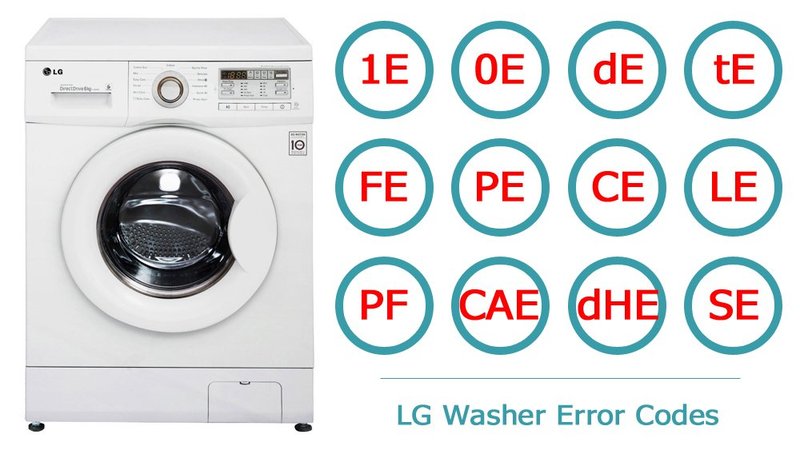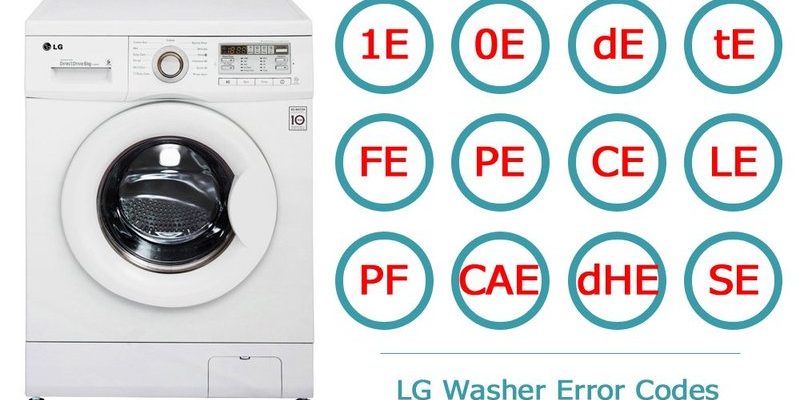
You might be wondering, “What on earth does this have to do with my warranty?” Great question! Understanding whether this glitch is covered under warranty can save you from unnecessary stress and expenses. Your washing machine’s warranty is essentially a promise from the manufacturer to fix certain problems, ideally without charging you. But, like any promise, it has its limits. Let’s break it down and see where the UE error fits into the warranty picture for LG washing machines.
Understanding LG Washing Machine Warranties
Before diving into whether the UE error is covered, let’s talk about what a typical LG washing machine warranty looks like. Think about a warranty as a safety net. It’s there to catch you when unexpected issues arise, but only if those issues fall within the net’s reach. Most LG washing machines come with a limited warranty, which usually covers parts and labor for a specific period—often one year from the date of purchase.
This warranty generally covers manufacturing defects or issues that aren’t caused by user error. Imagine it like a promised safety check: if there’s something wrong with the machine itself, LG might fix or replace parts for free. However, this warranty doesn’t usually cover problems that result from misuse, accidents, or normal wear and tear. The key here is determining whether the UE error is something caused by the machine’s design or by something else.
Now, here’s the deal: The UE error is often not considered a manufacturing defect. It’s more like a warning sign from your washer saying, “Hey, something’s not right with the load.” Think about it like a check engine light on your car that lights up when you forget to tighten the gas cap. It’s a helpful alert, but not necessarily a defect in the vehicle itself.
Common Causes of the UE Error Code
To understand if the UE error code is your machine’s fault, think about what causes it. The UE error is basically your washing machine telling you that the load inside is unbalanced. Imagine trying to juggle with one hand tied behind your back—it’s tough to stay steady, right? Similarly, if the clothes in your machine aren’t evenly distributed, the drum can’t spin properly. This imbalance can be due to a variety of reasons.
One common cause is simply too few items in the drum. When there are only a couple of items, like a pair of jeans or a single towel, they tend to cluster on one side of the drum, causing the imbalance. Another culprit could be a single heavy item, like a blanket, which throws everything off-kilter. Sometimes, it might be the result of mixing different fabric types that don’t spin together well, like jeans and t-shirts.
Now, while the UE error might seem like a hassle, it’s actually protecting your machine from potential damage. By stopping the cycle, it prevents the drum from spinning uncontrollably and causing wear or damage to the machine. So, although it can be inconvenient, it’s an important safeguard.
Is the UE Error Covered Under Warranty?
Let’s get to the heart of the matter—whether the UE error is covered by your warranty. In most cases, because the UE error is more of an operational hiccup than a defect, it typically won’t be covered. Remember, the warranty mainly steps in for defects inherent to the product’s manufacturing, not for issues caused by external factors like load imbalance.
Think of it this way: if you were a chef and your recipe instructions warned against adding too much salt, but you went ahead and did it anyway, the dish wouldn’t turn out right. That’s not the recipe’s fault, but rather a matter of following instructions. Similarly, if your machine is trying to balance a load that’s inherently wonky, that’s not a failure of the machine itself.
However, if you believe the error is due to a mechanical problem—like a sensor issue or a malfunctioning drum—then it might be worth checking in with LG. Contacting their customer service to review the specific terms of your warranty could uncover whether it might be a covered issue after all. But for pure load imbalance, the solution is usually adjusting the load and trying again.
Steps to Prevent the UE Error
Taking a few simple steps can prevent the UE error from interrupting your wash cycle. It’s akin to learning to walk on a tightrope with grace—balance is key. First, try to distribute clothes evenly in the drum. If washing bulky items, add a few smaller items to help balance things out. Think of it like balancing a seesaw; you need to evenly distribute weight on both sides.
Avoid washing just one or two items at a time, as this often leads to the dreaded imbalance. If you must wash a single item, try adding a towel or two to help even things out. Paying attention to the types of fabrics you wash together can also help. Mixing heavy and light fabrics can often lead to imbalance, much like trying to blend oil and water.
Ultimately, using your washing machine correctly and following these tips can minimize the chances of encountering the UE error. If it persists despite these adjustments, it might be worth checking the machine itself for any underlying issues. Remember, your warranty might not cover user-induced imbalance, but knowing how to load your machine properly can go a long way in preventing these headaches.
In conclusion, while the UE error might not be directly covered under your LG washing machine’s warranty, understanding its causes and taking preventative measures can ensure smoother laundry days. By working with your machine and not against it, you can enjoy clean clothes without the hassle of those pesky error codes.
